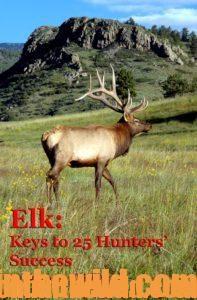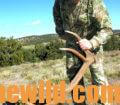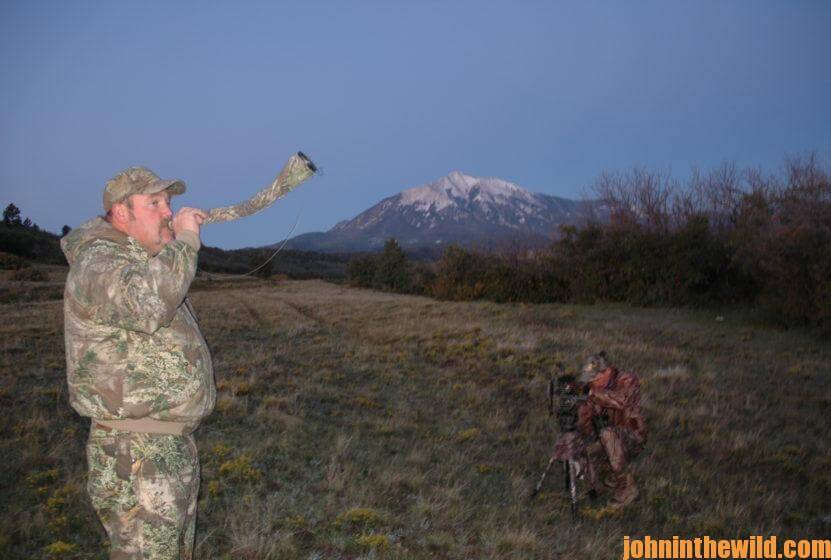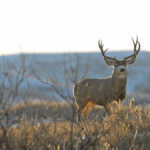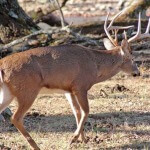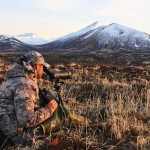Editor’s Note: Al Morris of Springville, Utah, has hunted elk for three decades and has guided for elk for two decades in Utah, New Mexico, Colorado, Wyoming, Idaho, Montana and Arizona. Morris has won the World Elk Calling Championship and the Best of the West Elk-Calling Contest, the Utah State Bugling Championship and the World Coyote Calling Championship.
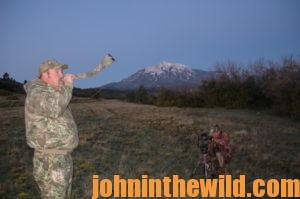
There are four stages of the rut each year. The pre-rut begins about August 15th each year and runs through September 12th or 15th. The main rut occurs from September 15 through September 25, when most of the cows are in estrus. The first week of October starts the second estrous cycle. The cows that haven’t been bred return to the estrous cycle, and the 1- and the 1-1/2-year-old cows have their first estrus. November is the post-post rut. Even during the post-post rut, elk calls work effectively. Let’s take a look at how to hunt and call during these four stages of ruts.
The pre-rut starts about August 15th, whether the elk are in Canada, Mexico or the United States. Once the elk drop their antlers in February, they start growing a new set of velvet antlers. I’m amazed that elk can grow 60 inches of bone between February and August. An elk antler is the fastest-growing tissue on the planet. With the decrease in sunlight that occurs in August, the elk’s body knows to release testosterone. When that testosterone gets into the blood stream, it causes the blood flow to be cut off to the antlers, and the velvet will begin to die.
During the summer months, there’s quite a bit of nerve activity in those velvet antlers. When you see an elk hit a tree or a limb with those antlers, you can tell from his reaction that the collision hurts. However, when the testosterone causes the blood flow to be cut off – generally between August 15th and August 25th – the antlers must feel very irritated. The elk then start trying to rub the 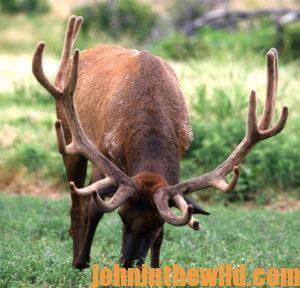 velvet off their antlers. Testosterone really has an effect on the elk. I’ve seen bulls stand in one place and shake. I’ve thought perhaps they may have had chronic wasting disease. Then when I’ve asked a biologist what’s happening, he’s told me that when elk receive those big shots of testosterone to their bodies, those surges of testosterone mess-up their systems and shut them down pretty much for 3 to 5 days. But when those bulls come out of that sulking time, the timber’s in trouble. The elk go to war with trees, bushes and shrubs, generally the last week of August.
velvet off their antlers. Testosterone really has an effect on the elk. I’ve seen bulls stand in one place and shake. I’ve thought perhaps they may have had chronic wasting disease. Then when I’ve asked a biologist what’s happening, he’s told me that when elk receive those big shots of testosterone to their bodies, those surges of testosterone mess-up their systems and shut them down pretty much for 3 to 5 days. But when those bulls come out of that sulking time, the timber’s in trouble. The elk go to war with trees, bushes and shrubs, generally the last week of August.
At this time of year, the bulls are ready to breed, but the cows haven’t come into estrus yet. In a herd of 100 cow elk, only 1% to 2% of the cows usually will come into estrus that first week of September. That means only one or two cows in a herd of 100 will be ready to breed – not enough cows for a bull to spend much energy chasing a cow to breed. Often big, mature bulls will save their energy and not come into the herd until around September 15, when more of the cows are in estrus. From August 25 to September 15 is a great time to elk hunt.
How to Call Elk During the Pre-Rut – August 15 to September 15:
During this time of year, the elk haven’t been harassed or chased by hunters. They’re not reloaded with testosterone, nor have they gone to war with the trees. However, their necks are swelling. All
year they’ve been looking forward to breeding season, and now that the time of year has arrived, they can’t get any dates. This month-long period is the best time of the year to take an elk, even though the elk aren’t as vocal as they are during the rut or the second rut. Elk don’t tell you they’re coming to you by bugling or posturing during the pre-rut, like they do while the rut is taking place to let you know they’re ready to whip you. But they’ll come in to take a good look at you, if they hear you calling.
I prefer to use estrus whine calls and cow calls during the pre-rut. I start by making a really-raspy whine. Sometimes I can get a bull to bugle to this call. If an elk doesn’t respond or come to that call, then I’ll use a cow call. Another productive call during the pre-rut is a spike bull bugle, a really high-pitched shrill bugle a young spike bull makes that doesn’t have any grunting at the end of

the call. I follow that with a cow call. I want to paint a picture in that bull’s mind of a cow coming into estrus that has a young bull trying to breed her. A big bull is the king of his kingdom, and even during the pre-rut, he’ll sneak in and have a look-see, if he thinks a cow’s in estrus, and a young bull’s attempting to breed her. That ole bull just can’t believe a young bull’s going to breed his cow. The big bull is convinced the young bull knows better than to breed an old bull’s cow. So, the old bull will come in just to see what this crazy young spike is doing. This type of elk hunt isn’t the glamorous one you’ll have during the rut, when the bulls are really bugling. But this hunt can be deadly effective for taking a big bull.
However, this hunt also can be very frustrating because you can call and call and not see or hear anything. Then when you stand up to leave, you may spook a bull that’s only 30-yards away. You’ve never heard or seen that bull, although he’s come slipping in to your calling. I’m amazed that a 1,000-pound animal can sneak-up to within 30 yards of you without your ever knowing he’s there. But this scenario happens many times when you’re hunting the pre-rut. To take a bull before he sees or smells you, set-up on his trail. The bull has to come from a certain direction to take a look at you, 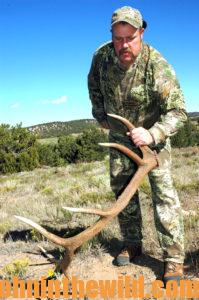 so by setting-up on his trail you’ll dramatically increase your odds for success.
so by setting-up on his trail you’ll dramatically increase your odds for success.
How, When, Where and Why to Use a Rattling Bag:
I was guiding at Three Forks Ranch, about 40-miles north of Steamboat Springs, Colorado, when I learned to use the rattling bag for elk. One of the guides working with me at Three Forks Ranch brought in a heavy set of whitetail antlers he used to draw in white-tailed deer. He asked, “Do you think these antlers will work to rattle-in elk like they do when you rattle in whitetails?” I answered, “I don’t know. The only way to find out is to try them.” When the elk guide returned to camp that night, he said, “You won’t believe what happened. I rattled-in an elk. We heard this elk bugling, I started rattling, the bull came in within 20 yards, but my bowhunter shot over his back.”
That night, I found a set of 5×5 whitetail antlers and put them in my pack for the next morning. I spotted three bulls in a meadow and decided the time had arrived to try-out rattling white-tailed antlers for elk. When I started rattling, the bulls were feeding. They brought their heads up and started posturing at each other like they were ready to fight. All three bulls were 5x5s. One bull finally broke and came running in, but my bowhunter didn’t get drawn on him quickly enough, and the bull left. The second elk came running in about 2-minutes later. My archer didn’t think he could make the shot. Finally, the third bull elk came running in and stopped at 12 yards. My bowhunter took him. My bowhunter and I looked at each other and said, “Wow, that’s three bulls we’ve rattled-in on one morning.” Rattling antlers really works on elk. From that moment on, I’ve always carried
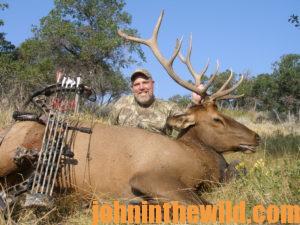
deer antlers to use to rattle-in elk.
I started rattling in 1997-1998. Since that time, I’ve rattled-in about 100 bull elk, had a number harvested by clients and taken a couple for myself.
To learn more about elk hunting, check out John E. Phillips’ book, “How to Find Your Elk and Get Him in Close,” available in Kindle, print and Audible versions at http://amzn.to/17ENNqK.
Tomorrow: Hunt the Main Rut for Elk